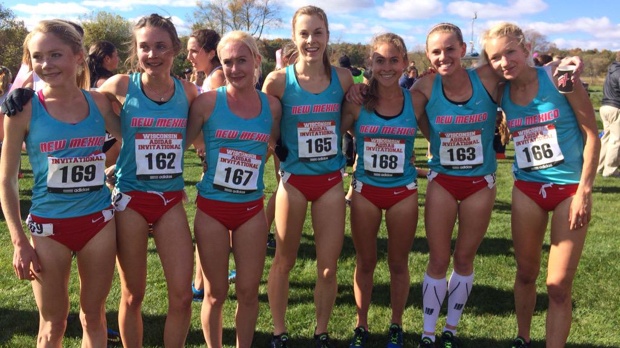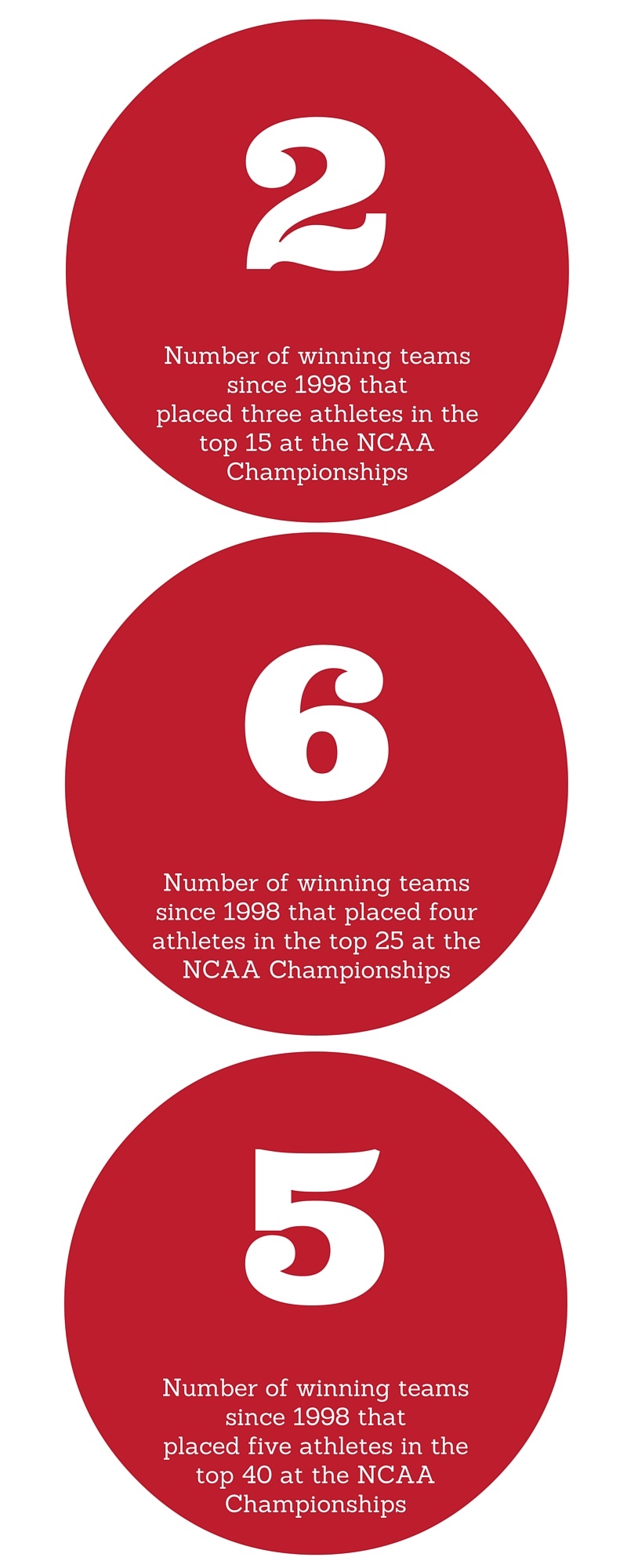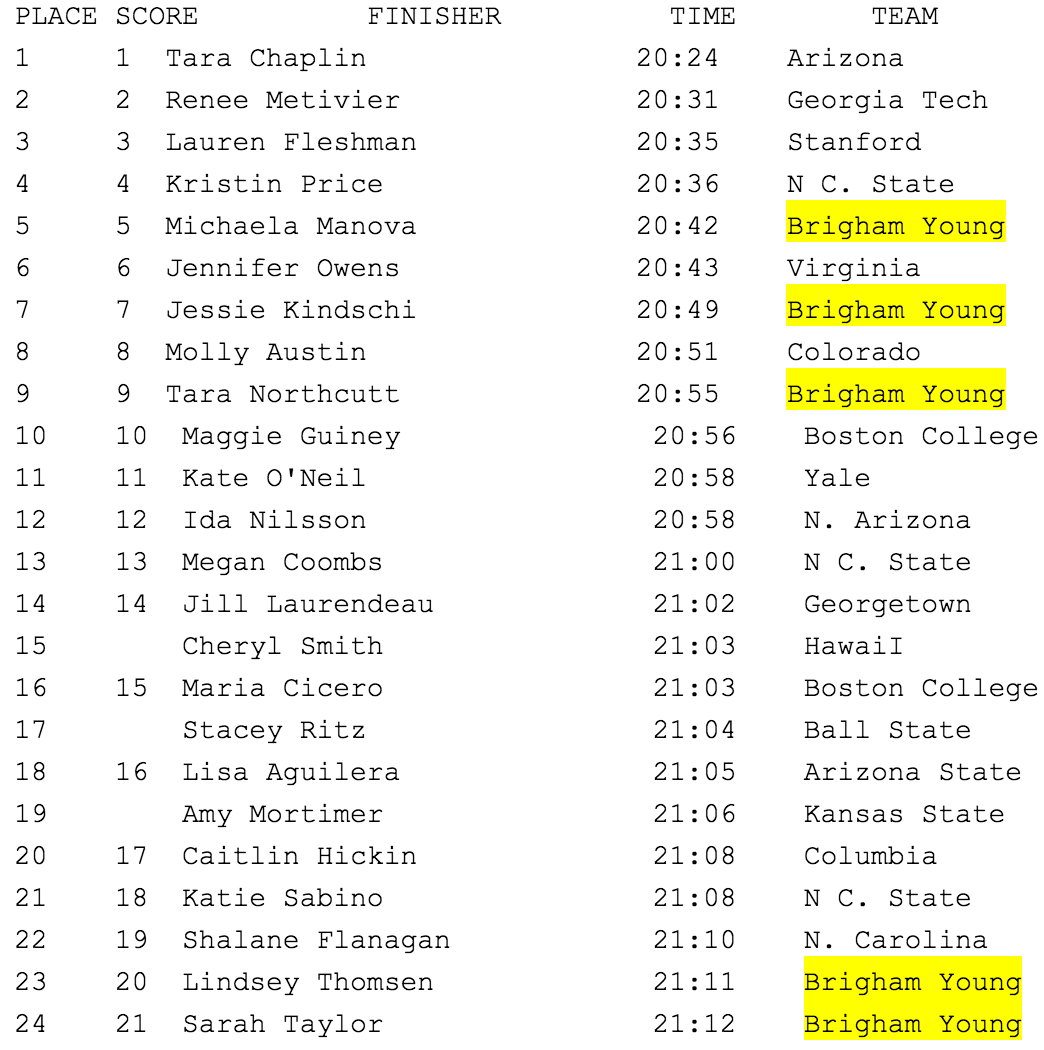How Low Can They Go? Breaking Down New Mexico's Potential for NCAA History
How Low Can They Go? Breaking Down New Mexico's Potential for NCAA History



It's got to be the power of the turquoise.
How low can they go? One day before the Wisconsin adidas Invitational last week we spoke to New Mexico Head Coach Joe Franklin and wanted to know.
“Coach, how many points do you think they can score tomorrow?” We guessed somewhere around 68. Coach Franklin shook his head firmly and refused to agree with us.
This was the biggest weekend for teams before the NCAA Championship between Wisconsin and Pre-Nationals, and it would be very difficult for the Lady Lobos to accumulate a score that low. After all, last year’s NCAA Champions, the Michigan State Spartans, dominated every single race they entered and walked away from their Wisconsin victory with 87 points, the lowest team score since the meet became a 6,000m contest in 2010.
And for a second I thought, are we maybe hyping this team too much? How good are they? We know they have a solid top four, but where will their fifth woman finish?

When the Lobos crossed the line in fourth, fifth, sixth, seventh and 10th, my jaw dropped. I have never seen a women’s team win like this before, and me, one of the biggest New Mexico believers, didn’t realize they were this good. Yes, four of the top six teams competed at Pre-Nats (Michigan, Colorado, Oregon, Stanford), but 32 points obliterated Michigan State's 2014 score that put them on the map for the NCAA Championships. My first comparison was the Colorado men at Pre-Nationals last fall (Their top six finished 2-4-8-9-12-14), but this? What could you compare it to?
RELATED: WATCH THE 2015 WISCONSIN ADIDAS INVITATIONAL WOMEN'S RACE
The lowest team score ever accumulated at the NCAA XC Championships was 36 points by the University of Virginia in 1981, the first year of women’s cross country in the NCAA. However, the Association for Intercollegiate Athletics for Women, the AIAW, was still in existence so the fields were split. Only 13 teams participated in the first NCAA Championships that fall and the AIAW folded the following year. The number of participating teams grew steadily each year but it wasn’t until 1998 that 31 teams competed, a number that still stands.
After combing through the entirety of the women’s NCAA XC Championships, I decided to focus only on the last 17 championships, when the field was more relatable to now.
According to our current Saucony Flo50 rankings, the New Mexico top four of Courtney Frerichs, Rhona Auckland, Alice Wright and Calli Thackery would score 34 points (we’re eliminating individuals who will not count toward team points, like Air Force’s Hannah Everson). Their fifth athlete from Wisconsin, Molly Renfer, was 10th in Madison but has yet to enter the Flo50 rankings. Depending on where New Mexico’s fifth runner finishes, this could be the best team since BYU scored 62 points to win it in 2001. (Since the field expanded to 31 teams in 1998, this BYU team is, in my opinion, the best in history. Colorado’s 2004 team that finished 2-13-14-27-30 is a close second.)
2001 NCAA Championship Top 24 Results

Screenshot captured from Track and Field News
The Numbers Don't Lie

Their margin of victory over runner-up North Carolina's 148 points, making them the number two all-time (since 1981) fo largest margin of victory in NCAA history.

Number of teams in NCAA history (again, since 1981) that have placed their top three athletes in the top 10. Miraculously, 1987 NC State and 1993 Arkansas did not win:
- 1981 Virginia
- 1987 NC State (Lost to Champions Oregon by 3 points)
- 1992 Villanova
- 1993 Villanova
- 1993 Arkansas (Lost to Villanova by 6 points)
- 2001 BYU
While it's probably out of the question that the New Mexico Lobos WON'T win the NCAA Championship next month, it's now become a game of sorts to guess how many points they can score and if they can come close to breaking records in the process. Top three athletes in the top 10? Top 15? All five in the top 25? Comparing the stats above with the team that New Mexico has assembled opens a door of possibilities for the NCAA Championships. I happily look forward to witnessing the outcome in Louisville on November 21st.